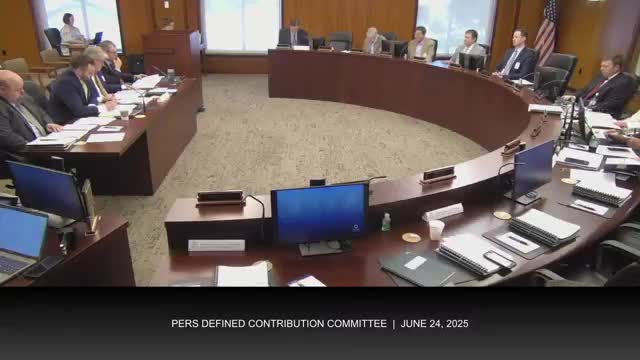CoreBridge Voya and Tia discuss real estate fund performance amid market challenges
June 26, 2025 | Public Employees Retirement System of Mississippi, Agencies, Organizations, Executive, Mississippi
This article was created by AI summarizing key points discussed. AI makes mistakes, so for full details and context, please refer to the video of the full meeting. Please report any errors so we can fix them. Report an error »

The Mississippi Public Employees Retirement System (PERS) held a meeting on June 24, 2025, to discuss the performance and structure of the Defined Contribution and Investment Committees. The meeting focused on the challenges faced by various funds, particularly in the context of the commercial real estate market.
The discussion began with an overview of recent performance trends, noting that the last three years have seen one of the worst performances for certain funds, primarily due to significant challenges in the commercial real estate sector. This prompted a quicker response from fund managers compared to private real estate options.
The meeting then shifted to the Optional Retirement Plan (ORP), which is managed by three providers: CoreBridge, Voya, and Tia. Tia holds over 50% of the ORP assets, amounting to approximately one billion dollars. The committee reviewed the asset allocation across these providers, highlighting that domestic equity constitutes a smaller portion of participant assets in the ORP compared to other plans.
A key point of discussion was the performance of the Voya plan, which has a higher equity allocation of over 55%. This plan has shown resilience, with active management strategies yielding returns above benchmarks in recent quarters. The committee emphasized the importance of active management in protecting investor capital during downturns.
The Tia plan was noted for its diversification across fund options, with a lower concentration in any single asset class. The committee discussed the performance of Tia's real estate investments, which differ from those in the Defined Benefit plan, as they focus on owning actual properties rather than listed real estate securities. This approach may lead to slower responses to market changes but could offer stronger returns as the real estate market stabilizes.
In conclusion, the meeting underscored the ongoing challenges in the investment landscape, particularly in real estate, while also highlighting the potential for improved returns in the future. The committee plans to continue monitoring these developments closely to ensure optimal outcomes for participants in the PERS system.
The discussion began with an overview of recent performance trends, noting that the last three years have seen one of the worst performances for certain funds, primarily due to significant challenges in the commercial real estate sector. This prompted a quicker response from fund managers compared to private real estate options.
The meeting then shifted to the Optional Retirement Plan (ORP), which is managed by three providers: CoreBridge, Voya, and Tia. Tia holds over 50% of the ORP assets, amounting to approximately one billion dollars. The committee reviewed the asset allocation across these providers, highlighting that domestic equity constitutes a smaller portion of participant assets in the ORP compared to other plans.
A key point of discussion was the performance of the Voya plan, which has a higher equity allocation of over 55%. This plan has shown resilience, with active management strategies yielding returns above benchmarks in recent quarters. The committee emphasized the importance of active management in protecting investor capital during downturns.
The Tia plan was noted for its diversification across fund options, with a lower concentration in any single asset class. The committee discussed the performance of Tia's real estate investments, which differ from those in the Defined Benefit plan, as they focus on owning actual properties rather than listed real estate securities. This approach may lead to slower responses to market changes but could offer stronger returns as the real estate market stabilizes.
In conclusion, the meeting underscored the ongoing challenges in the investment landscape, particularly in real estate, while also highlighting the potential for improved returns in the future. The committee plans to continue monitoring these developments closely to ensure optimal outcomes for participants in the PERS system.
View full meeting
This article is based on a recent meeting—watch the full video and explore the complete transcript for deeper insights into the discussion.
View full meeting
